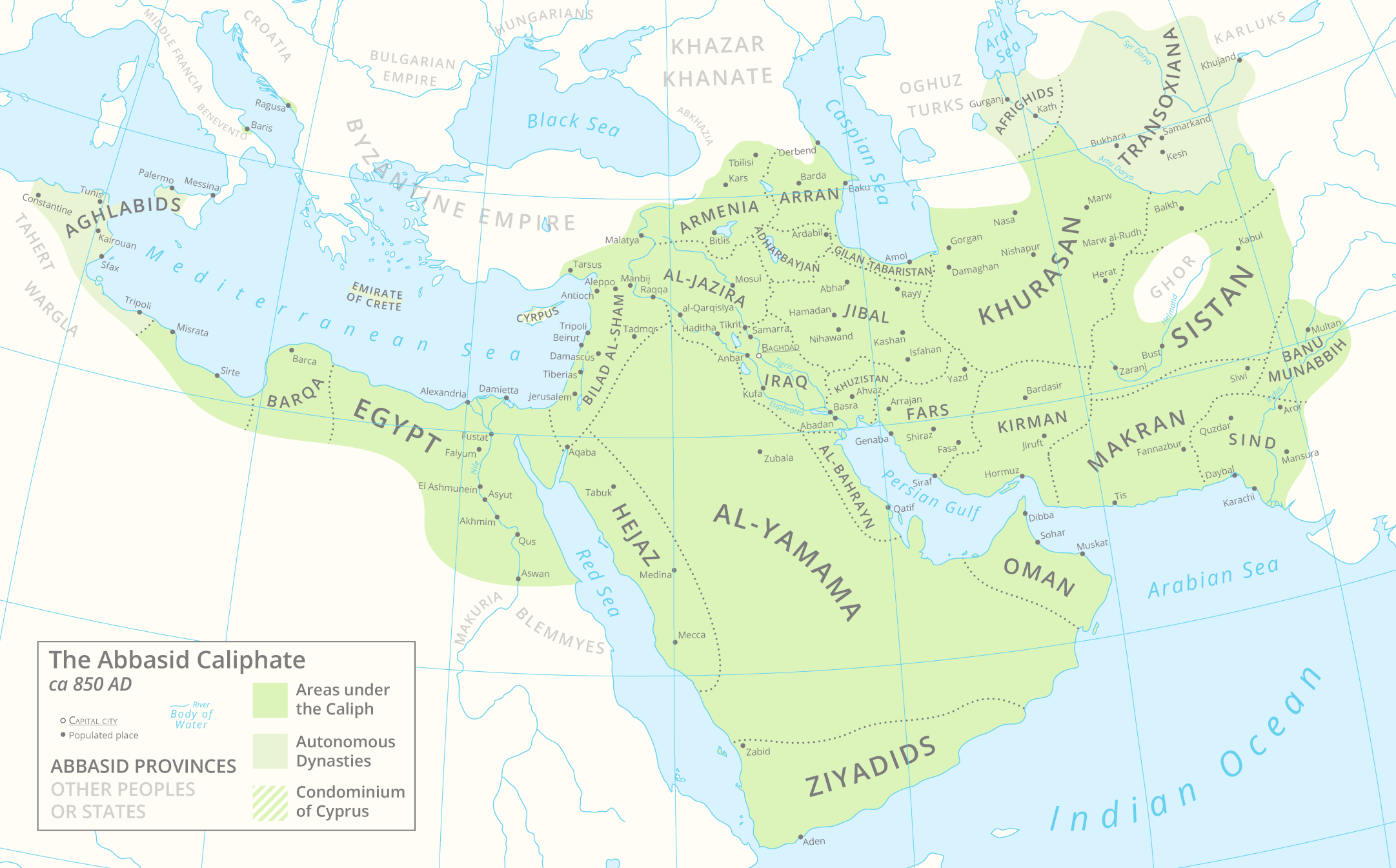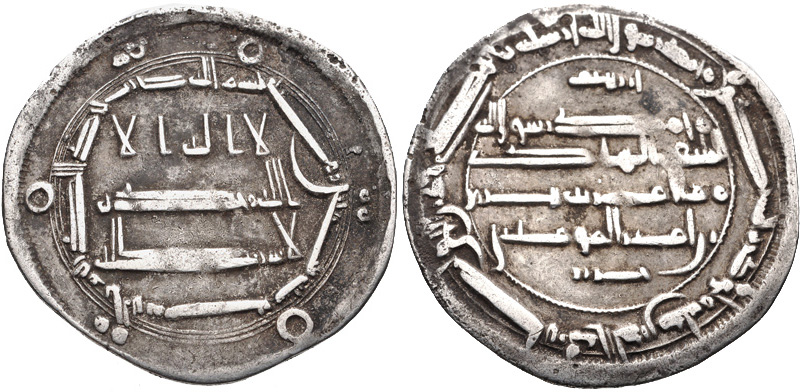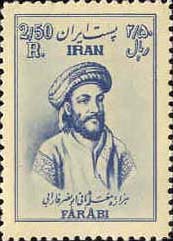|
Ishaq Al-Mawsili
Ishaq al-Mawsili ( ar, إسحاق الموصلي; 767/772 – March 850) was an Arab musician of Persian origin active as a composer, singer, music theorist and writer on music. The leading musician of his time in the Abbasid Caliphate, he served under six successive Abbasid caliphs: Harun al-Rashid, Al-Amin, Al-Ma'mun, Al-Mu'tasim, Al-Wathiq and Al-Mutawakkil. The caliphs and Abbasid court held him in high regard, and his diverse intellect elevated him to a social status that was highly unusual for musicians of the time. Taught by his similarly renowned father Ibrahim al-Mawsili and the noted lutenist Zalzal, he succeeded his father in leading the conservative musical establishment, putting him at odds with progressive musicians such as Ibrahim ibn al-Mahdi and Ziryab. He has appeared in the ''Maqamat'' of Al-Hariri of Basra and ''One Thousand and One Nights''. Life and career Early life Modern sources vary on the exact location and birthdate of Ishaq al-Mawsili. The arabist Ev ... [...More Info...] [...Related Items...] OR: [Wikipedia] [Google] [Baidu] |
Persians
The Persians are an Iranian ethnic group who comprise over half of the population of Iran. They share a common cultural system and are native speakers of the Persian language as well as of the languages that are closely related to Persian. The ancient Persians were originally an ancient Iranian people who had migrated to the region of Persis (corresponding to the modern-day Iranian province of Fars) by the 9th century BCE. Together with their compatriot allies, they established and ruled some of the world's most powerful empires that are well-recognized for their massive cultural, political, and social influence, which covered much of the territory and population of the ancient world.. Throughout history, the Persian people have contributed greatly to art and science. Persian literature is one of the world's most prominent literary traditions. In contemporary terminology, people from Afghanistan, Tajikistan, and Uzbekistan who natively speak the Persian language are know ... [...More Info...] [...Related Items...] OR: [Wikipedia] [Google] [Baidu] |
Encyclopædia Iranica
''Encyclopædia Iranica'' is a project whose goal is to create a comprehensive and authoritative English language encyclopedia about the history, culture, and civilization of Iranian peoples from prehistory to modern times. Scope The ''Encyclopædia Iranica'' is dedicated to the study of Iranian civilization in the wider Middle East, the Caucasus, Southeastern Europe, Central Asia, and the Indian subcontinent. The academic reference work will eventually cover all aspects of Iranian history and culture as well as all Iranian languages and literatures, facilitating the whole range of Iranian studies research from archeology to political sciences. It is a project founded by Ehsan Yarshater in 1973 and currently carried out at Columbia University's Center for Iranian Studies. It is considered the standard encyclopedia of the academic discipline of Iranistics. The scope of the encyclopedia goes beyond modern Iran (also known as "Persia") and encompasses the entire Iranian cultural ... [...More Info...] [...Related Items...] OR: [Wikipedia] [Google] [Baidu] |
Abu Ubaidah (scholar)
Abu Ubaida, Obaida, or Ubaydah ( ar, أبو عبيدة; AD 728–825) Ma’mar ibn ul-Muthanna-Abu al-Mukhtar Firas b. Khindif was an early Muslim scholar of Arabic philology. Abu Ubaida was a controversial figure; later scholar Ibn Qutaybah remarked that Abu Ubaida "hated Arabs," though his contemporaries still considered him perhaps the most well-rounded scholar of his age. Whether or not Abu Ubaida was truly a supporter of the Shu'ubiyya is a matter of debate. Life Abu Ubaida was originally of Persian Jewish descent. In his youth, he was a pupil of Abu 'Amr ibn al-'Ala', Yunus ibn Habib and Al-Akhfash al-Akbar, was later a contemporary of Al-Asmaʿi, and in 803 he was called to Baghdad by the Caliph Harun al-Rashid. In one incident recounted by numerous historians, the Caliph al-Rashid brought forth a horse and asked both Al-Asmaʿi and Abu 'Ubaida (who had also written extensively about zoology) to identify the correct terms for each part of the horse's anatomy. Abu 'Ubaid ... [...More Info...] [...Related Items...] OR: [Wikipedia] [Google] [Baidu] |
Islamic Sciences
The Islamic sciences ( ar, علوم الدين, ʿulūm al-dīn, lit=the sciences of religion) are a set of traditionally defined religious sciences practiced by Islamic scholars ( ), aimed at the construction and interpretation of Islamic religious knowledge. Different sciences These sciences include: * : Islamic jurisprudence * : the study of the authenticity of Prophetic traditions or hadith ** : the biographical study of hadith transmitters with the purpose of evaluating their trustworthiness * (sometimes also called , "the roots of religion"): speculative theologyOn the term , see . On the term 'speculative theology', see, e.g. : "rationally minded theologians employed the methods and techniques of speculative theology, ''‘kalām’'' or ''‘ʿilm al-kalām’'', as it is typically called". *: Arabic grammar * : interpretation of the Qur'an ** : the study of abrogation (parts of the Qur'an which supersede or cancel other parts) * : rules for the proper recitation of the ... [...More Info...] [...Related Items...] OR: [Wikipedia] [Google] [Baidu] |
Al-Hadi
Abū Muḥammad Mūsā ibn al-Mahdī al-Hādī ( ar, أبو محمد موسى بن المهدي الهادي; 26 April 764 CE 14 September 786 CE) better known by his laqab Al-Hādī (الهادي) was the fourth Arab Abbasid caliph who succeeded his father Al-Mahdi and ruled from 169 AH (785 CE) until his death in 170 AH (786 CE). His short reign ended with internal chaos and power struggles with his mother. Biography Al-Hadi was the eldest son of Al-Mahdi and Al-Khayzuran and the older brother of Harun al-Rashid. He was very dear to his father and was appointed as the first crown prince by his father at the age of 16 and was chosen as the leader of the army. Prior to his death, Al-Mahdi supposedly favored his second son, Harun al-Rashid, as his successor, taking him on multiple military expeditions in 779 and 781 to train him to be the next caliph, as his own father prepared him, but died before the formal transfer of the crown prince title could occur. Alternatively, Al-R ... [...More Info...] [...Related Items...] OR: [Wikipedia] [Google] [Baidu] |
Al-Mahdi
Abū ʿAbd Allāh Muḥammad ibn ʿAbd Allāh al-Manṣūr ( ar, أبو عبد الله محمد بن عبد الله المنصور; 744 or 745 – 785), better known by his regnal name Al-Mahdī (, "He who is guided by God"), was the third Abbasid Caliph who reigned from 775 to his death in 785. He succeeded his father, al-Mansur. Early life Al-Mahdi was born in 744 or 745 AD in the village of Humeima (modern-day Jordan). His mother was called Arwa, and his father was al-Mansur. When al-Mahdi was ten years old, his father became the second Abbasid Caliph. When al-Mahdi was young, his father needed to establish al-Mahdi as a powerful figure in his own right. So, on the east bank of the Tigris, al-Mansur oversaw the construction of East Baghdad, with a mosque and royal palace at its heart. Construction in the area was also heavily financed by the Barmakids, and the area became known as Rusafa. According to reports, he was tall, charming, and stylish; he had tan skin, a long fore ... [...More Info...] [...Related Items...] OR: [Wikipedia] [Google] [Baidu] |
Al-Farabi
Abu Nasr Muhammad Al-Farabi ( fa, ابونصر محمد فارابی), ( ar, أبو نصر محمد الفارابي), known in the Western world, West as Alpharabius; (c. 872 – between 14 December, 950 and 12 January, 951)PDF version was a renowned Early Islamic philosophy, early Islamic philosopher and jurist who wrote in the fields of political philosophy, metaphysics, ethics and logic. He was also a Islamic science, scientist, Islamic astronomy, cosmologist, Mathematics in medieval Islam, mathematician and Islamic music, music theorist.Ludwig W. Adamec (2009), ''Historical Dictionary of Islam'', pp.95–96. Scarecrow Press. . In Islamic philosophy, Islamic philosophical tradition he was often called "the Second Teacher", following Aristotle who was known as "the First Teacher". He is credited with preserving the original Ancient Greek literature, Greek texts during the Middle Ages via his Commentary (philology), commentaries and treatises, and influencing many prominent philo ... [...More Info...] [...Related Items...] OR: [Wikipedia] [Google] [Baidu] |
Muhammad Ibn Zakariya Al-Razi
Abū Bakr al-Rāzī (full name: ar, أبو بکر محمد بن زکریاء الرازي, translit=Abū Bakr Muḥammad ibn Zakariyyāʾ al-Rāzī, label=none), () rather than ar, زکریاء, label=none (), as for example in , or in . In modern Persian his name is rendered as fa, ابوبکر محمدبن زکریا رازی, label=none (see ), though instead of fa, زکریا, label=none one may also find fa, زکریای, label=none (see ). , often known as (al-)Razi or by his Latin name Rhazes, also rendered Rhasis, was a Persian physician, philosopher and alchemist who lived during the Islamic Golden Age. He is widely regarded as one of the most important figures in the history of medicine, and also wrote on logic, astronomy and grammar. He is also known for his criticism of religion, especially with regard to the concepts of prophethood and revelation. A comprehensive thinker, al-Razi made fundamental and enduring contributions to various fields, which he recorded i ... [...More Info...] [...Related Items...] OR: [Wikipedia] [Google] [Baidu] |
Abbasid Dynasty
The Abbasid dynasty or Abbasids ( ar, بنو العباس, Banu al-ʿAbbās) were an Arab dynasty that ruled the Abbasid Caliphate between 750 and 1258. They were from the Qurayshi Hashimid clan of Banu Abbas, descended from Abbas ibn Abd al-Muttalib. The Abbasid Caliphate is divided into three main periods: Early Abbasid era (750–861), Middle Abbasid era (861–936) and Later Abbasid era (936–1258). A cadet branch of the dynasty also ruled as ceremonial rulers for the Mamluk Sultanate as Caliph (1261–1517), until their conquest by the Ottoman Empire. Ancestry The Abbasids descended from Abbas, one of Muhammad's companions (as well as his uncle) and one of the early Qur'an scholars. Therefore, their roots trace back to Hashim ibn 'Abd Manaf and also Adnan in the following line: Al-‘Abbas ibn Abdul-Muttalib ibn Hashim ibn Abd Manaf ibn Qusai ibn Kilab ibn Murrah ibn Ka'b ibn Lu'ay ibn Ghalib ibn Fihr ibn Malik ibn An-Nadr ibn Kinanah ibn Khuzaima ibn Mudrikah ibn Ily ... [...More Info...] [...Related Items...] OR: [Wikipedia] [Google] [Baidu] |
Round City Of Baghdad
The Round City of Baghdad is the original core of Baghdad, built by the Abbasid Caliph al-Mansur in 762–766 CE as the official residence of the Abbasid court. Its official name in Abbasid times was City of Peace ( ar, مدينة السلام, Madīnat as-Salām). The famous library known as the House of Wisdom was located within its grounds. Description According to Ya'qubi, the plans for the city were drawn up, but it was not until 2 August 762 that construction began, under the supervision of four architects. Huge resources were amassed for the project: the Arab chroniclers report 100,000 workers and craftsmen, and sums of 18 million gold dinars or 100 million silver dirhams. The caliphal Palace of the Golden Gate and the main mosque, as well as some of the administration offices, were apparently completed by 763, allowing al-Mansur to move his residence into the city, and the rest of the Round City was completed by 766. Mansur believed that Baghdad was the perfect city ... [...More Info...] [...Related Items...] OR: [Wikipedia] [Google] [Baidu] |
Arrajan
Arrajan (Argan) was a medieval Persian city located between Fars and Khuzestan, which was settled since Elam period and an important in the Sasanian period until the 11th century. It was the capital of a medieval province of the same name, which corresponds to the modern-day Behbahan of Khuzestan Province, Iraref name="iranica-arrajan" /> The city was (re)founded by Sasanian Empire, Sasanian king Kavad I and continued to develop in the Islamic period. Having a fertile soil and supplies of water and integrated in a major road system, the small province flourished and reached its peak in the 10th century. It declined by the 11th century as a result of an earthquake and military conflicts. History The archaeological site of Arrajan covers an area of about , with only scattered traces of buildings, walls, a castle, a qanat, a dam, and a bridge across the nearby Marun river. Arjan, or Argan / Arigan is the ancient name of Behbahan. Which belongs to the Elamite / Khuzi period, in Ira ... [...More Info...] [...Related Items...] OR: [Wikipedia] [Google] [Baidu] |
Ray, Iran
Shahr-e Ray ( fa, شهر ری, ) or simply Ray (Shar e Ray; ) is the capital of Ray County in Tehran Province, Iran. Formerly a distinct city, it has now been absorbed into the metropolitan area of Greater Tehran as the 20th district of municipal Tehran, the capital city of the country. Historically known as Rhages (), Rhagae and Arsacia, Ray is the oldest existing city in Tehran Province. In the classical era, it was a prominent city belonging to Media, the political and cultural base of the Medes. Ancient Persian inscriptions and the Avesta (Zoroastrian scriptures), among other sources, attest to the importance of ancient Ray. Ray is mentioned several times in the Apocrypha. It is also shown on the fourth-century Peutinger Map. The city was subject to severe destruction during the medieval invasions by the Arabs, Turks, and Mongols. Its position as a capital city was revived during the reigns of the Buyid Daylamites and the Seljuk Turks. Ray is richer than many other ancient c ... [...More Info...] [...Related Items...] OR: [Wikipedia] [Google] [Baidu] |




.jpg)


.png)

